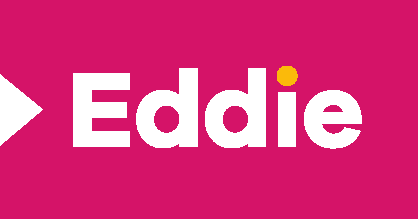Corporate video co-creation, where employees capture raw footage and professional editors transform it into polished content, offers a highly scalable solution for companies needing consistent video output. This distributed filming approach combined with centralized editing creates an efficient system that can handle everything from internal communications to marketing content. By leveraging existing staff across multiple locations while maintaining professional quality through expert post-production, organizations can rapidly scale their video production without proportional cost increases.
Is co-creation a scalable way to make videos?
The co-creation model represents a revolutionary approach to corporate video production that delivers exceptional scalability. By distributing filming responsibilities to employees across the organization while centralizing the editing process, companies can produce significantly more videos than with traditional production methods. This hybrid approach allows organizations to capture authentic footage from multiple locations simultaneously, without the logistical challenges and expenses of deploying professional film crews.
At its core, video co-creation leverages your team’s insider knowledge and access while ensuring professional quality through expert editing. We’ve seen organizations scale from producing a handful of videos annually to creating hundreds by implementing this collaborative approach, all while maintaining consistent branding and production values.
How does co-creation work in corporate video production?
The co-creation workflow begins with clear guidelines from the central video team. Employees receive instructions on what to film, including shot lists, interview questions, and technical specifications. Using smartphones or basic cameras, they capture raw footage according to these guidelines and submit the materials through a dedicated platform to the editing team.
Once received, professional editors transform this raw content into polished videos. This includes selecting the best footage, correcting color and audio issues, adding graphics, incorporating branding elements, and ensuring narrative coherence. The central editor applies professional techniques that elevate the quality while maintaining a consistent look and feel across all content.
Communication tools like Eddie‘s Cobie platform facilitate the entire process, allowing for streamlined feedback, revisions, and final approval. This structured workflow enables organizations to produce videos efficiently while maintaining quality control at the most critical stage—the edit.
What equipment do employees need for video co-creation?
The beauty of the co-creation model lies in its accessibility. Most employees already have the primary tool needed—a modern smartphone with HD video capabilities. Today’s smartphones offer remarkable video quality that, when properly used, can deliver professional-looking footage.
For audio, which is often the weakest element in amateur recordings, a simple external microphone that connects to smartphones dramatically improves quality. Basic considerations for lighting include filming in well-lit areas or near windows for natural light, avoiding backlighting, and maintaining consistent lighting throughout recordings.
Optional equipment that enhances quality without significant investment includes small tripods for stability, clip-on lavalier microphones for interviews, and simple reflectors for improved lighting. Many companies provide “filming kits” to key participants, containing these essential items in a convenient package like Eddie’s Gadget Pack.
What are the cost benefits of video co-creation versus traditional production?
The financial advantages of co-creation are substantial. Traditional video production typically costs $1,000-$5,000+ per finished minute when accounting for crew, equipment, travel, and post-production expenses. In contrast, the co-creation model can reduce these costs by 60-80%, primarily by eliminating professional filming crews and expensive equipment rentals.
Co-creation also offers significant time savings. While traditional production might require weeks of planning and coordination, co-created content can be produced much faster, with employees capturing footage on their own schedules and editors turning around finished videos within days.
Particularly for organizations with multiple locations, co-creation eliminates travel expenses and logistical complications, allowing simultaneous content creation across different sites. The authentic, employee-generated content often performs better with internal audiences, providing additional value through increased engagement.
How do you maintain quality control in co-created videos?
Quality control begins with clear, detailed filming guidelines and basic training for participating employees. These resources ensure that raw footage meets minimum standards for editing. Many organizations develop simple checklists covering framing, lighting, audio, and content requirements.
The professional editing process serves as the primary quality control mechanism, where skilled editors can enhance good footage and sometimes salvage suboptimal recordings. Editors apply consistent branding, graphics, music, and color correction to ensure all videos meet company standards.
Establishing quality benchmarks and providing feedback to content creators helps improve future submissions. Over time, this creates a virtuous cycle where employee-generated footage steadily improves, further enhancing the final product and scaling capabilities.
What types of corporate videos work best with the co-creation model?
Employee testimonials and day-in-the-life content thrive in the co-creation model, as authenticity matters more than technical perfection. Culture videos capturing events, celebrations, and office life benefit from being filmed by participants rather than outside crews.
Simple product demonstrations, particularly those requiring insider knowledge, work well when demonstrated by subject matter experts and polished by professional editors. Location-specific content like office tours, facility highlights, and regional updates becomes economically viable through co-creation when filming multiple locations would otherwise be prohibitively expensive.
Content that benefits from authentic employee perspectives, like recruitment videos and training materials, gains credibility when featuring real team members in their natural work environments rather than actors or overly produced settings.
Implementing a successful video co-creation strategy
Start by establishing clear guidelines for filming, including technical requirements, content expectations, and submission processes. Create simple training resources like Eddie’s Kickstart Course that teach employees the basics of video production without overwhelming them with technical details.
Set up a streamlined submission system where employees can easily upload raw footage and provide context for editors. Manage the editing workflow efficiently, establishing reasonable turnaround times and feedback processes.
Measure content effectiveness through engagement metrics, feedback surveys, and business outcomes to refine your approach over time. Begin with a small group of contributors and gradually scale up production volumes as capabilities and confidence increase.
With proper implementation, organizations can evolve from producing a handful of videos annually to creating hundreds of effective, on-brand videos that serve multiple business objectives while maintaining control of both costs and quality.
If you’re interested in learning more, contact our team today.

